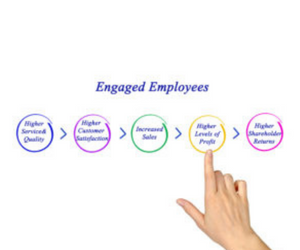The World’s Reference Library for Minerals
What is the most widely viewed museum object in the world?
The answer is, the Smithsonian’s Hope Diamond.
If you’re one of the roughly 30 million people who will be visiting the Smithsonian Institution in Washington, D.C. during the Institution’s 150th Anniversary celebration, be sure to see the Hope Diamond. It’s located on the second floor of the National Museum of Natural History.
When you see the Hope Diamond, you’re looking at one of the rarest and most precious gems on earth. If no one has prepared you for it, you’d probably expect a large, sparkling colorless stone. True, the Hope Diamond is large but the diamond itself is a glittering violet-blue. There’s a radiance to it so lovely that you can understand why kings, like Louis XIV of France and George IV of England, treasured the gem.
The Hope Diamond is just one small part of the Smithsonian’s gem and mineral collection. Since the Smithsonian’s mission is “the increase and diffusion of knowledge,” there’s more to the Smithsonian’s collection than just this astonishingly beautiful gem.
The Hope Diamond is actually a mineral, and behind the scenes at the Smithsonian is the world’s preeminent mineral collection. The collection includes samples of each of the world’s more than 4000 known minerals. Minerals often come in different forms, so there are samples of many known varieties of the individual minerals.
The World’s Reference Library for Minerals
The scale of the collection is impressive. To visualize the museum’s collection of just one of these minerals, quartz , imagine a drawer from your dresser. Then imagine that your dresser is 18 drawers high and 7 drawers wide. Each of those drawers might contain 20 to 50 different varieties of quartz.
The collection contains, to the best of our current knowledge, all the varieties of quartz from the entire world. The collection is available to scholars from throughout the world. It is, in the words of Randall Kremer, a Smithsonian spokesman, “The World’s Reference Library for Minerals.”
Scholars can borrow samples or can request minute shavings for study and experimentation.
The minerals are available at no charge, but the Smithsonian nevertheless gets something priceless in return. Each scholar or scientist who uses Smithsonian specimens is asked to share their results with the Smithsonian. In this way, the Smithsonian has become one of the world’s most outstanding repositories of information on minerals
It’s a good deal for the Smithsonian and for this country as well because it means an ever-expanding knowledge base about minerals. The implications of this are almost beyond imagination. To get a glimpse of the importance of minerals, look at a city skyline, and consider that most of the raw materials for all the buildings you see come from minerals. Whether it’s the steel in the girders, or the silicon in the glass windows, or the cement foundations, it’s minerals that make up the buildings.
Or think of an automobile. Almost everything in it, from the iron and steel and aluminum in the body, to the tungsten in the headlights or the copper in the wiring, comes from minerals. Minerals are a basic natural resource and the more we know about them, the more wisely we can use them.
The Hope Diamond may be the showiest of the minerals, but in the view of Linda Welzenbach, one of the Smithsonian’s geologists, “all minerals matter.”
Search Blogs
Latest Posts
“Peace” That Includes Occupation: A Guarantee of Additional Suffering
https://foreignpress.org/journalism-resources/peace-that-includes-occupation-a-guarantee-of-additional-suffering Publication – foreignpress.org
Empowerment Through Adversity: A Journey of Relentless Success and Compassion for Ukraine
https://medium.com/@VIPIgnite/empowerment-through-adversity-a-journey-of-relentless-success-and-compassion-for-ukraine-dfe3d5553fed Publication – medium.com
Altruism and War in Ukraine
https://www.psychologytoday.com/us/blog/to-end-human-trafficking/202312/altruism-and-war-in-ukraine Publication – psychologytoday.com
Empowerment Through Adversity: A Journey of Relentless Success and Compassion for Ukraine
Empowerment Through Adversity: A Journey of Relentless Success and Compassion for Ukraine with Mitzi Perdue About The Episode Welcome to the latest episode of The Coffee In The Greenroom Podcast, brought to you by VIP Ignite and Truth Mgmt. Today, we delve into the...
Subscribe to Updates
About Author

Mitzi Perdue is the widow of the poultry magnate, Frank Perdue. She’s the author of How To Make Your Family Business Last and 52 Tips to Combat Human Trafficking. Contact her at www.MitziPerdue.com
All Articles
Employee Engagement – Gallup Really Knows!
Employee Engagement - Gallup Really Knows!Visit Gallup, the People Who Really Know There are 1.3 billion full-time employees in the world. Give a guess: how many feel enthusiastic about and committed to their work? 1) 13% 2) 30% 3) 82% 4) How the heck could anybody...
Recurrent Vaginitis
Recurrent VaginitisMOST WOMEN WILL AT SOME TIME EXPERIENCE VAGINITIS At some point in their lives, most women will experience vaginitis. It’s one of the most common gynecologic condition encountered in the office. Typically, it comes about when the yeast or bacteria...
Take Action: Beating Your Competitors
Take Action: Beating Your Competitors Act Faster Than Your Competitors The super-successful people I’ve known have all had a huge propensity for action. They had tremendous agility in carrying out projects rapidly. I remember one night in late 1951, my father Ernest...
Transforming Cardiovascular Disease Prevention In Women
Transforming Cardiovascular Disease Prevention In WomenCARDIOVASCULAR DISEASE (CVD) IS USA’S LEADING CAUSE OF DEATH FOR WOMEN One in four women will die of CVD, and to put this in perspective, the annual CVD mortality for women is double that of all forms of cancer...
Obesity In Women: New Insights
Obesity In Women: New InsightsOBESITY HAS MORE IMPACT THAN ANY OTHER CHRONIC DISEASE Obesity has enormous impact, partly because it is so widespread and partly because it exacerbates so many other disease states. In the US, there are 93 million Americans with...
Fingernail Infections
Fingernail InfectionsFINGERNAIL INFECTIONS AFFECT WOMEN MORE THAN MEN In contrast to toenail infections, fingernail infections, especially those caused by candida, impact more women than men. This happens because often women’s jobs as housekeepers or dishwashers...



